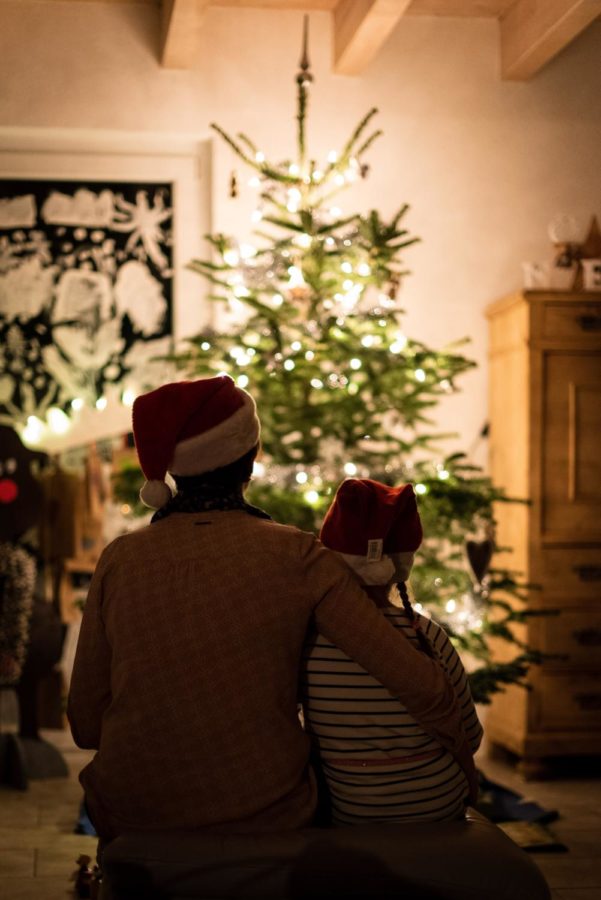The History of Santa Claus
During our childhood, many of us have probably been told by our parents that Santa Claus was real, even going as far as putting milk and cookies out for him in hopes that he would gift us that new Lego set for Christmas. (With carrots for the reindeer!) Say… have you ever wondered why Santa was created? Or who he even is? When you think about it, most people don’t really reminisce deeply about the significance of Santa, and just imagine him as this jolly old man who gives children presents.
I’m going to guide you through the history of Santa Claus because I believe it’s important for people to know more about him as the icon of Christmas culture and the holiday season!
The ‘Real’ Santa Claus
The late Santa Claus, otherwise known as Saint Nicholas in his time, lived hundreds of years ago, estimated to be around A.D. 280 in modern-day Turkey. He was a monk who was known to be very selfless and kind to others, often helping sick children and giving his wealth away to the poor. As more years passed by, he became infamous in the area while traveling the countryside and doing these charitable deeds as ‘the protector of the children and sailors’. After he died, the date of his death, December 6, became sort of a holiday and mostly included feasting in his honor. Over the years, he kept his ground as a popular saint, still staying loved during and after the Protestant Reformation in the 1500s, a religious movement that was basically a challenge against the Catholic church’s teachings at the time.
Into American Culture
The concept of Saint Nicholas started seeping into American culture around the end of the 18th century. It all started in December of 1773 and 1774 when a New York newspaper reported that groups of Dutch families had gathered to honor the anniversary of his death. This caught the attention of some Americans, who slowly started to adopt this into their personal lives.
In 1804, a member of the New York Historical Society, John Pintard, distributed wooden carvings of St. Nicholas at the society’s annual meeting, the engraving containing the now-familiar face of Santa Claus. The background of the carvings also started the early example of what the setting of ‘Christmas’ really looked like, with stockings filled with toys and fruit hung over the fireplace.
In 1809, Washington Irving helped to popularize the classic story of Santa Claus, referring to St. Nicholas as the patron saint of New York in his book, “The History of New York”. As Santa’s prominence grew within the American population, the manner in which his appearance was described was all over the place: from a rascal with a blue three-cornered hat, red waistcoat, and yellow stockings, to a man wearing a broad-brimmed hat and a massive pair of trunk hoses.
In 1841, a Philadelphia shop displayed a life-sized Santa Claus model in the window of their store. It was only a matter of time before the store began to attract kids and their parents, many fascinated with this version of the fictional Santa Claus.
Then later the early 1890s, the Salvation Army needed money to pay for the free meals they would give to families in need. To raise money, they started dressing up unemployed men in Santa Claus costumes and sent them to the streets of New York. This attire consisted of the classic Santa Claus outfit and a bell used to attract people (and their money of course!). Ever since, these Salvation Army Santas have been ringing bells on the street corners of American cities.
Christmas Traditions in the U.S.
In the U.S., Santa Claus is known for flying in a sleigh with 9 reindeer, the most notable being Rudolph, the red-nosed reindeer. He enters houses through a chimney and leaves presents under the Christmas tree for kids who were good during the year, and coal in the stockings of kids who were bad. Oftentimes, the stockings are hung over a fireplace for Santa to stuff them with candy, small toys, and other small things that can fit into them. As I’ve said before, another tradition many follow is putting cookies and milk out for Santa to eat when he visits, and if people are extra thoughtful, carrots for his reindeer.
Santa and Gift-giving Culture
Gift-giving, something mostly centered around kids during the holiday, has been an essential part of Christmas traditions in the U.S. It’s been important ever since the holiday’s rejuvenation in the early 19th century due to stores and companies using Christmas as bait to get more sales. By the 1840s it became so prevalent that newspapers started to create separate sections for holiday advertisements which often featured images of the newly-popular Santa Claus.
Santa Claus Worldwide
Santa Claus has been included in many cultures, with each version looking different or having a different story.
In Aruba, an island near the Caribbean, their equivalent of Santa Claus is Sinterklaas. Every year in November, thousands of people from the island go to the capital harbor of Oranjestad to welcome him with festive songs as he arrives in a steamboat from Spain. He has a long beard and is fitted in a red robe with a “mijter”(a bishop’s hat) atop his head. He holds a golden staff and a big book full of children’s names, written out if they were good or bad during the year, much like in America. He rides through the city on a white horse, tossing out pepernoten, small gingerbread cookies, to onlooking children.
In South Korea, only 3 in 10 Koreans who follow the Christian religion attend Church on Christmas, although for the most part, Christmas is just a festive event for family and friends to spend time together. The Korean Santa Claus goes by the name Santa Haraboji (Grandpa Santa). He wears green robes rather than traditional red, and his clothes are paired with the “gat”, which is a tall flat-topped hat worn by nobles during the Joseon dynasty. Santa Haraboji rarely visits individual homes, but rather gives out gifts at public events.
In Liberia, Santa Claus is instead a devil named Old Man Bayka. This devil does not give presents though, and instead, he begs for presents on Christmas Day. Old Man Bayka roams the streets, entertaining people with his dancing to the beat of a drum. As he dances, he says “My Christmas on you,” meaning “please give me something for Christmas”. Some people will give him money and sweets, while others will simply just watch.
Fun Fact! Santa Claus’s name evolved from his Dutch nickname, Sinter Klaas, which is a shortened form of Sint Nikolaas (Dutch for Saint Nicholas).
Sources of information
https://www.history.com/topics/christmas/santa-claus
Credits for the thumbnail:

Meet Brianna
Hi, Im Brianna, Im an 8th grader. I like reading, writing, playing horror games and wathing horror movies. Im also sort of a perfectionist.
Why...




Zoe MacDonald ¦ Jan 20, 2023 at 6:53 am
Interesting that he was based on a real person! Guess that’s how most myths start.
A. Kim ¦ Jan 18, 2023 at 9:27 am
weird, when I went to South Korea during Christmas time, it was a highschool dressed up as Santa in a red robe but this was an interesting article